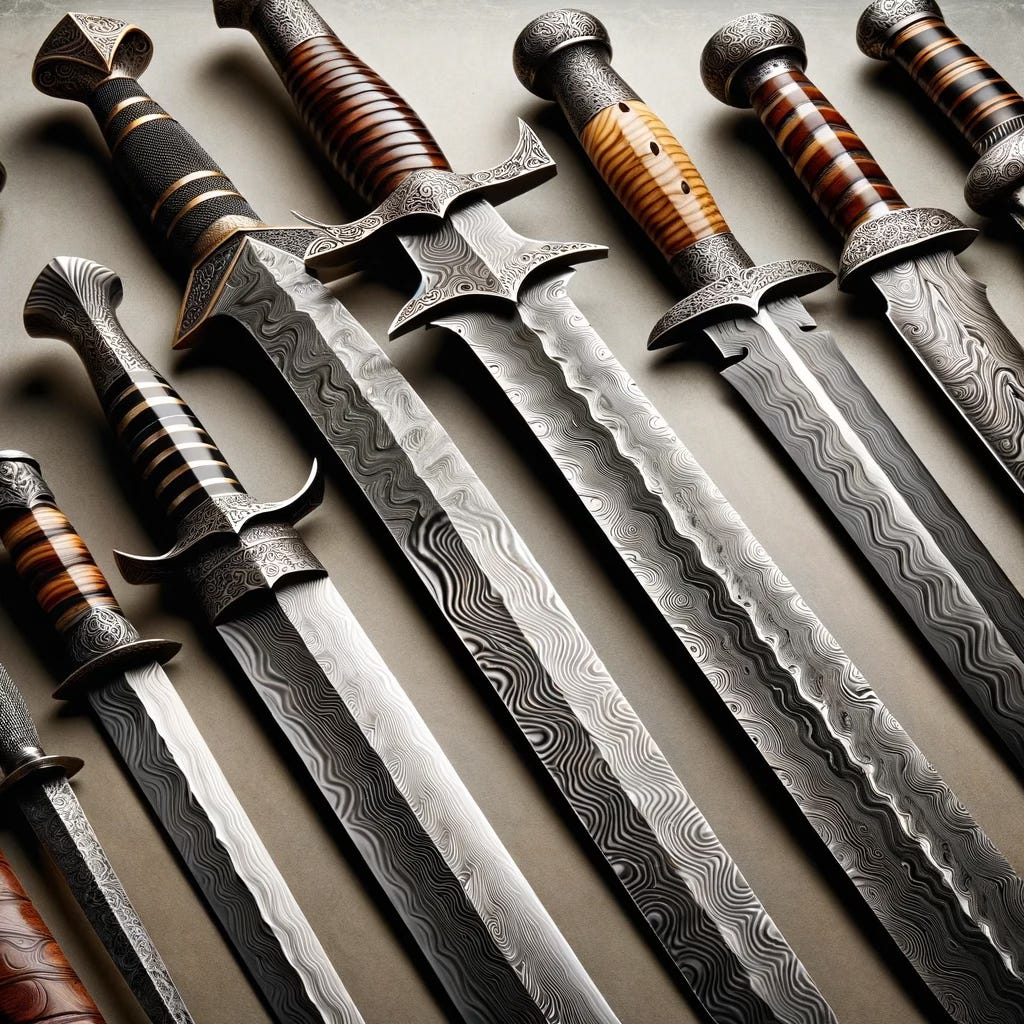Echoes of the Forge
Damascus steel, a marvel of the ancient world, holds a legacy as enigmatic as it is fascinating. This legendary metal, renowned for its distinctive wavy patterns and unparalleled sharpness, was a product of ingenuity in the Near East, crafted from wootz steel—a prized import from India. Its origins, shrouded in secrecy, trace back to as early as 300 BC. Predominantly used in sword making, Damascus steel was more than a weapon; it was a symbol of power and artistry, brandished by famed warriors and revered leaders through the ages.
The allure of Damascus steel extended beyond its mesmerizing aesthetic. It was famed for its formidable properties: a toughness and resilience that allowed it to be honed to a razor-sharp edge, yet flexible enough to withstand intense combat. The steel's legend grew with each tale of a sword slicing through lesser metals or even rock, a testament to its extraordinary capabilities.
But the intrigue of Damascus steel lies deeper than its surface. Modern research has peeled back layers of this mystery, revealing a microstructure unlike any other: carbon nanotubes and nanowires, along with a unique pattern formed through controlled carbide spheroidization. These microscopic features, centuries ahead of their time, were the secret to its strength and flexibility, a marvel only recently understood through the lens of contemporary science.
Despite its celebrated history, the art of making Damascus steel was lost by the 18th century. Theories abound, from the depletion of specific ore sources to political upheaval that disrupted the transmission of this coveted knowledge. Today's metallurgists, armed with modern techniques, continue to attempt recreating this legendary material, yet the original methodology eludes us, remaining a tantalizing riddle from the past.
Damascus steel stands as more than a mere metal. It is a testament to the zenith of ancient metallurgy, a perfect storm of artistic expression and technical prowess. Its story is interwoven with tales of legendary warriors and ancient battles, a metallic chronicle of human history and achievement. In the annals of metallurgy, Damascus steel is not just a lost art but a lingering question, its wavy patterns a metaphor for the undulating mysteries of our past, awaiting rediscovery and understanding.




